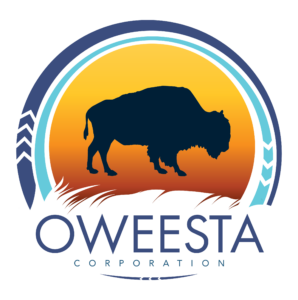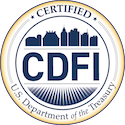Frequently Asked Questions About Oweesta
What does “Oweesta” mean?
What kinds of organizations does Oweesta help?
How is Oweesta funded?
Frequently Asked Questions About Native CDFIs
What is a Native CDFI?
How can I start a Native CDFI for my community?
Does the tribe have to start the Native CDFI?
Should a Native CDFI incorporate with the State or Tribe?
All Native CDFIs are in some way or another distinct from their Tribal government—a Tribe itself can’t become a certified CDFI. However, this can be achieved in a couple different ways. The vast majority of Native CDFIs are incorporated under the laws of either their state or Tribe. These organizations are governed by a board of directors and have specific language in their incorporating documents identifying them as nonprofits. They can then seek tax-exempt status from the IRS recognizing them as a 501(c)(3) organization. This is, in my mind, the easiest way to operate a Native CDFI, since many funders prefer to deal only with 501(c)(3) organizations. There isn’t a big difference between incorporating under the state or Tribe. Native CDFIs that incorporate under their Tribes generally do so as an expression of the Tribe’s sovereignty and self-determination. If your Tribe already has a nonprofit code and a well-functioning administration, it is generally fairly easy to adapt articles of incorporation and bylaws to fit both that code and the federal requirements of 501(c)(3) organizations. You can certainly ask the attorneys on your board about this option.
Should a Native CDFI incorporate as 501c3 or 7871?
It is also possible to run a Native CDFI that is a program or subdivision of the Tribe—called a 7871 organization—but this is more rare.
You can check out the link below from FNDI to see some of the advantages and disadvantages of 7871s. Your Tribal attorneys may also know more.
https://firstnations.org/knowledge-center/strengthening-nonprofits/7871
What may not be 100% clear is this: if you are running your Native CDFI as a part of the Tribe (as opposed to a corporation created by the Tribe), you can’t get 501(c)(3) status. Tribes are tax exempt under IRC Section 7871, so there’s no way to or need to apply for tax exemption under IRC Section 501(c)(3). The hard thing about this situation is that most foundations don’t understand Section 7871; they want the 501(c)(3) exemption letter they’re used to. So the ultimate effect is that it is harder to fund-raise as part of a Tribe rather than a corporation created under Tribal or State law.
How do I find money to start the Native CDFI?
What kinds of topics do the training and TA programs at Oweesta cover?
Frequently Asked Questions About Building Native Communities Curriculum
Who wrote the Building Native Communities (BNC) curriculum?
Where can we order the Building Native Communities curriculum?
Where and when do the instructor trainings take place for the Building Native Communities curriculum?
Who conducts the trainings for the Building Native Communities curriculum?
What do the instructor trainings for the Building Native Communities curriculum cover?
Will the BNC curriculum be expanded beyond its present scope and topics?




